#Irish Halloween Traditions
Explore tagged Tumblr posts
Text
Exploring Irish Halloween Traditions: From Samhain to Today
Hello and welcome to my latest blog post Exploring Irish Halloween Traditions: From Samhain to Today. Halloween is a festival celebrated in many parts of the world, but few places have as strong a connection to the holiday as Ireland. With its roots in ancient Celtic traditions, Irish Halloween is a time of both merriment and solemn reflection, a unique blend of old and new customs that have been…
#A Few of my Favorite Things#Apple Bobbing#Barmbrack#Binding Living and Dead#Bonfires#Dumb Supper#Halloween Traditions#Irish Fruitcake#Irish Halloween Traditions#Jack o Lanterns#Mirror Gazing#New Blog Post#Oiche Shamhna#Samhain#Spirit of the Holiday#Wonderlesch
1 note
·
View note
Text

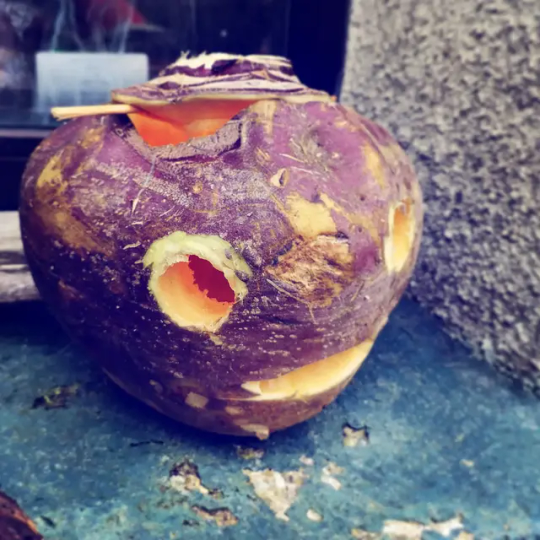
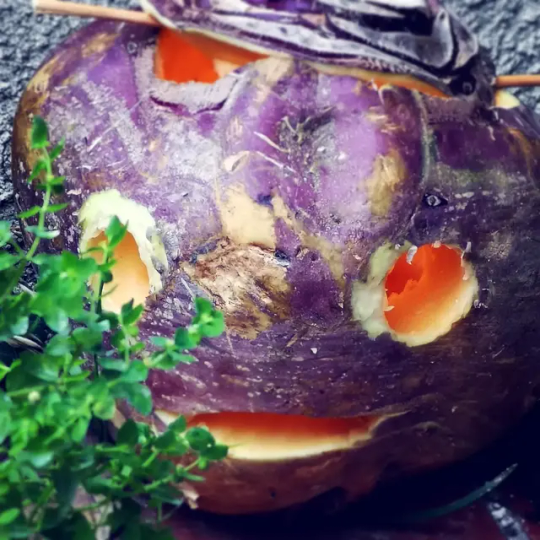
my son
#traditional irish samhain lanterns were carved out of turnips#irish immigrants in america started using pumpkins instead because they were easier to get (and waaay easier to carve)#thus we got the traditional halloween pumpkin#happy halloween#halloween#spooky season#personal#irish things#samhain
4K notes
·
View notes
Text


Ghost Turnip
Linocut print on kitakata paper.
This guy is inspired by the “ghost turnip” plaster-cast model in the National Museum of Ireland that was created by museum artist Eileen Barnes from a turnip jack-o-lantern donated in 1943 by Roos Ní Braonáin, a school teacher with a desire to preserve the history of the style of Jack-o-lanterns that were popular in Ireland in the 19th and early 20th centuries.
In the states today, carved pumpkin jack-o-lanterns have become completely ubiquitous in late October. This tradition actually comes to us from Irish and Scottish immigrants who brought over the practice of carving faces into turnips/other locally-available root vegetables & lighting them from inside with a candle around Samhain.
The terminology “jack-o-lantern” has a particularly storied past: It’s usage in the 1600s was basically interchangeable with “will-o-the-wisps” which refers to mysterious, ghostly lights seen over peat bogs. It isn’t until the 1800s that we see the term “jack-o-lantern” used to refer to a carved vegetable. It’s believed the term is derived from an Irish folktale about a fiend named Jack who tricked the devil and must wander the earth for all eternity with just a (turnip) lantern to light his way; Stingy Jack, Jack-of-the-lantern, jack-o-lantern.
#linoleum carving#linoleum print#printmaker#printmaking#linoprint#block printing#relief print#salted snail studio#reliefprint#block print#relief printmaking#linocut#halloween#samhain#irish folklore#Celtic traditions#block printmaking#ghost turnip#jack o lantern
93 notes
·
View notes
Text

I’ve just now realized I have never seen anybody use a jack o’lantern as an lantern, instead they are just used as organic candle holders!🎃
🎃🇮🇪🎃
#history#jack o’lantern#ireland#stingy jack#pumpkin#halloween history#turnip#potato#united states#1800s#irish history#spooky season#lanterns#immigrants#halloween#scotland#halloween girl#american history#jack o lantern#irish culture#pumpkin carving#spooky month#dublin penny#halloween traditions#nickys facts
5 notes
·
View notes
Text
Cád é an tradisuinta Oíche Shamhna is fearr leat?? 🎃🦇🕸
9 notes
·
View notes
Text
The Legend of Stingy Jack: The Haunting Legend Behind the Halloween Jack-o'-Lantern
🎃 New Blog Post Alert! 🎃 Discover the spooky tale of Stingy Jack and its eerie connection to Halloween. Read now
(Image Source: A traditional Irish turnip Jack-o’-lantern from the early 20th century. Photographed at the Museum of Country Life, Ireland. © Rannṗáirtí Anaiṫnid 2009) Halloween, a time of ghosts, ghouls, and goblins, is a time when the veil between this world and the next is at its weakest and spirits roam the earth. One legend looms large in the heart of Halloween itself – the macabre tale of…
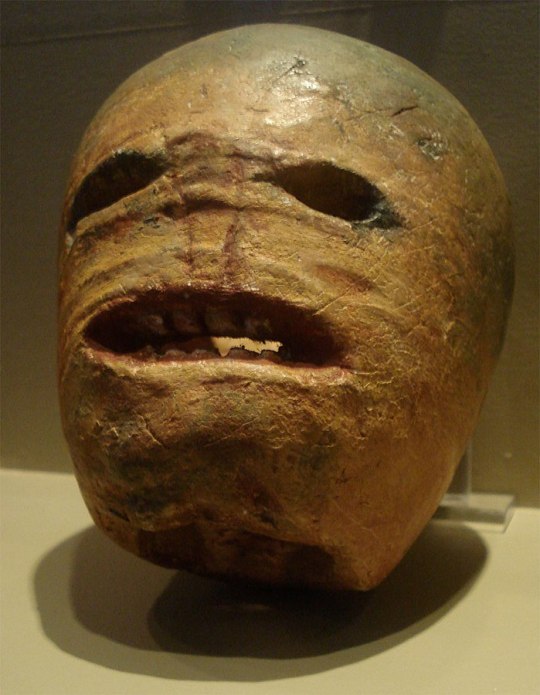
View On WordPress
#devil#faustian bargain#folklore#halloween#halloween traditions#ireland#irish folklore#jack-o&039;-lantern#lantern#pumpkin#pumpkin carving#samhain#satan#stingy jack#turnip#turnip carving
9 notes
·
View notes
Text
Love me some folklore. Love when it gets used to analyze current work. Love that I’m not the only one who knows about Stingy Jack.
A theory about Merv
I have a theory about Mervyn Pumpkinhead. I’d say it’s a headcanon but it’s more a theory.

According to the tale of Stingy Jack (the origin of the jack-o-Lantern) we carve Jack-o-lanterns to drive away old Jack and other wandering ghosts. The Jack-o-lantern is a protection ward against supernatural threats from entering your home. One superstition has it that if you blow out the Jack-o-lantern before midnight on Halloween you invite evil spirits to enter your home for the entire year. It’s only safe to blow it out after midnight. Another superstition is if you let the Jack-o-lantern burn out naturally you invite good luck for the entire year and have warded your home against evil for the full year. It is especially good luck if it manages to burn until after sunrise. In The House with a clock in its walls Pumpkin Jack-o-lanterns are used as protection wards all year long. Jack-o-lanterns, at their heart, are symbols of protection. Now, because we see Mervyn as a Mervyn Turniphead in The Sandman story The Tempest, it’s very clear that his Jack-o-lantern head isn’t just for the aesthetic. In his Turnip form, that is an old school Irish Jack-o-lantern. That is a pre-Halloween decoration (use for any time of year) Protection symbol against supernatural threats.

So even in present day when Mervyn has a modern Pumpkin Jack-o-lantern head, Mervyn is a walking, talking, protection ward against supernatural threats. He’s not just the groundskeeper or janitor. He’s a line of defense. This does explain why Mervyn stands up to The Furies (The Kindly Ones) the way he does.
And this is also one of the many reasons I, myself, love Jack-o-lanterns. They aren’t just symbols of Halloween. They are kind of comforting in their protective light.

#mervyn#merv#merv pumpkinhead#mervyn pumpkinhead#the sandman#sandman#neil gaiman#stingy jack#jack o lantern#halloween traditions#Irish folktales
5K notes
·
View notes
Text



happy (slightly belated) halloween! turnips are the more traditional vegetable of choice in Britain (rotation optional). they are the original Jack O’Lanterns, from the story of Stingy Jack, dating back to Ireland in the 1600s:
‘According to the story, Stingy Jack invited the Devil to have a drink with him. True to his name, Stingy Jack didn’t want to pay for his drink, so he convinced the Devil to turn himself into a coin that Jack could use to buy their drinks. Once the Devil did so, Jack decided to keep the money and put it into his pocket next to a silver cross, which prevented the Devil from changing back into his original form.
Jack eventually freed the Devil, under the condition that he would not bother Jack for one year and that, should Jack die, he would not claim his soul. The next year, Jack again tricked the Devil into climbing into a tree to pick a piece of fruit. While he was up in the tree, Jack carved a sign of the cross into the tree’s bark so that the Devil could not come down until the Devil promised Jack not to bother him for ten more years.
Soon after, Jack died. As the legend goes, God would not allow such an unsavory figure into heaven. The Devil, upset by the trick Jack had played on him and keeping his word not to claim his soul, would not allow Jack into hell. He sent Jack off into the dark night with only a burning coal to light his way. Jack put the coal into a carved-out turnip and has been roaming the Earth with it ever since. The Irish began to refer to this ghostly figure as “Jack of the Lantern,” and then, simply “Jack O’Lantern.”’
(Source.)
#halloween#pumpkin carving#traditional crafts#folklore#mythology and folklore#irish mythology#britain#my art
0 notes
Text
btw mutuals I'm giving you all a nice bowl of colcannon for this Halloween. piping hot, salty and buttery. yeah I'm giving you the scoop with the coin in it. or with the ring if that's what youre after. happy halloween. I hope the rest of the year is kind to you.
#colcannon#love y'all#actually I'm not making colcannon this year everyone sue me#look people in my family do not like cabbage lmaoooo. I do though. I do.#also I know the trinket is supposed to be a mystery but you gotta be somewhat aware of the choking hazard when serving guests#the meal may be a tradition we carry on but dying young will not be#càl ceannann#potatoes#Éire#irish#halloween#ireland
1 note
·
View note
Text
Jack-o'-lanterns have such a grab bag of lore, i love it
Fire, of course, has a long history of offering protection from evil forces. During the Celtic festival of Samhain (from which many Halloween traditions originate), the veil between worlds was considered thin, and ritual bonfires reminded the spooks to stay on their side of the lane.
Many a lantern has protected the lonely traveler on a dark moonless night. But lanterns can be dangerous too—especially the supernatural ones. in certain folklore 'jack-o'-lantern' was another name for will-o'-the-wisps, atmospheric ghost lights (or as legend has it, lost souls) that appear above bogs and lure unwise wanderers into sinkholes.
Then there's the 18th cent Irish folktale of Stingy Jack, a mischievous fellow who tricked the Devil twice, exacting a promise that hell would never claim his soul. So Jack goes on his cheerful way, and dies (as humans are prone to do), and ends up at the pearly gates. Now Heaven, it turns out, doesn't want a damn thing to do with him. So Jack jaunts on down and goes knocking on the gates of hell—only to have Satan slam the door in his face! How this leads to Stingy Jack being doomed to wander the earth carrying a hollowed out rutabaga lit by an ember of the flames of hell, I couldn't tell you. But that is how the story goes.
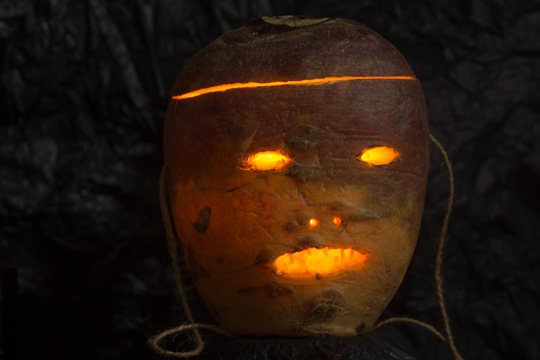
Whether the legend of Stingy Jack inspired or fueled or was created-by the gourd-carving practice, by the 19th cent, Irish, Scottish, and Welsh alike were annually carving jack-o'-lanterns out of turnips & rutabaga & beets & potatoes, and lighting them up to ward off Jack and other wandering spirits. Immigrants carried the tradition to North America, where pumpkins were indigenous and much easier to carve.
And so the modern Jack-o'-Lantern was born!

Not that gourd lanterns were anything new. Metalwork was expensive, after all, and gourds worked as-well-as and better-than-most crops when it came to carving a poor farmer's lantern.
As for carving human faces into vegetables, that supposedly goes back thousands of years in certain Celtic cultures. It may even have evolved from head veneration, or been used to represent the severed skulls of enemies defeated in battle. Or maybe not! Like many human traditions, jack-o'-lanterns evolved over multiple eras and cultures and regions, in some ways we can trace and others we can only guess at. But at the end of the day, it makes a damn good story, and a spooky way to celebrate—which is as good a reason as any (and a better reason than most!) to keep a tradition going.
In conclusion: happy spooky season, and remind me to tell yall about plastered human skulls one of these days 🎃
srcs 1, 2, 3
2K notes
·
View notes
Text
THE MORRIGAN



WHO IS SHE?
The Morrigan is a triple goddess from Irish mythology who is associated with war, fate, and sovereignty. According to myth, she is often depicted as a crow or raven, and is said to appear in both a positive and negative guise, sometimes as a nurturing mother and other times as a destructive force. She is said to be the phantom queen of the Danaan People, the ancestral spirits of Ireland, and is sometimes depicted as a powerful seer or prophetic figure.
BASIC INFO:
Appearance: the Morrigan is often depicted as a fierce and powerful woman wearing a long, flowing black cloak or gown, and sometimes with feathers or a crown of feathers. She is also commonly associated with a black crow, which is said to be her messenger and the vessel of her power. Her appearance is usually associated with darkness and mystery, embodying the enigma and unpredictability of war and fate.
Personality: she has a complex and multi-faceted personality, often embodying multiple aspects of femininity. She is said to encompass aspects of the traditional maiden, mother, and crone archetypes, representing youthful zeal, maternal nurturing, and wise counsel, respectively. She is also known for her vengeful and bloodthirsty streak, embodying the brutal and ruthless nature of war and the chaos of fate. Despite her fierce and sometimes fearsome reputation, she is also viewed as a powerful protector and defender of the Irish people.
Symbols: cloak, spear, chariot, sword, and shield
Goddess of: magic, war, battle, life, death, sovereignty, fresh water, destiny, prophecy, and fate
Culture: Celtic
Plants and trees: willow, aspen, rowan, snapdragon, hawthorn, yew, belladonna, mugwort, rose, and nightshade (do not consume, handle with care!)
Crystals: ravenite, yeomanite, schorl, arsenopyrite, harlequin opal, black opal, skye marble, pyrolusite, biotite, feldspar, black agate, hematite, smoky quartz, bloodstone, onyx, charoite, black obsidian, labradorite, shungite, and black tourmaline
Animals: crow, raven, horse, eel, rook, serpent, and wolf
Incense: frankincense, myrrh, sandalwood, rose, cedar, juniper, and dragon’s blood
Practices: death witchcraft, spirit work, divination, shadow work, ancestor worship, psychic abilities, and necromancy
Colours: red, black, white, blue, and green
Numbers: 3 and 6
Zodiac: Scorpio
Tarot: The High Priestess, The Tower, Queen of Swords, The Devil, Justice, and Death
Planet: Moon
Days: Monday, Imbolc, Lammas, Mabon, Samhain, Halloween, and full moons
Parents: Cailitin and Ernmas
Siblings: Ériu, Banba, Fódla, Gnim, Coscar, Fiacha, and Oll
Partner: The Dagda and an unnamed shapeshifting goddess
Children: Mechi
MISC:
Crows and ravens: the Morrigan is often associated with crows or ravens due to her nature as a deity of death, fate, and transformation. In Irish mythology, crows or ravens were often seen as messengers between the worlds of the living and the dead, and could be seen as omens of impending change or transformation. For the Morrigan, these birds served as her messengers and helped her carry out her duties as a deity of war, fate, and the supernatural. Additionally, the Morrigan herself was sometimes depicted as a crow or raven in the form of a woman.
Death: she is often associated with death because she is seen as a deity of fate and transformation, which can include death and rebirth. In Irish mythology, she is often depicted as a battle goddess who wields a spear or sword, and is seen as a bringer of violence and change. She is also associated with the concept of death as a natural and inevitable part of life, and is sometimes seen as a guide for the souls of the dead as they cross over to the afterlife.
War: in Irish mythology, she was often seen as a fierce and powerful warrior, who would appear in the form of a crow or raven to guide and aid the soldiers of the Tuatha de Danann, a group of gods and mythological beings. She was often invoked by soldiers in order to bring them victory in battle and could also be seen as a symbol of the chaos and destruction that can occur during war.
Triple goddess: she is often associated with the triple goddess archetype due to her connection with the number three and her role as a goddess of transformation and female empowerment. In Celtic mythology, the number three was often seen as sacred and powerful, and the Morrigan is sometimes depicted as embodying these three aspects of femininity: maiden, mother, and crone. This association reflects her nature as a powerful and multifaceted deity who encompasses the different phases of a woman's life, from youth and fertility to wisdom and maturity.
Samhain: in Celtic mythology, Samhain is believed to be a time when the boundary between the world of the living and the world of the dead becomes thin, allowing the spirits of the deceased to return to the world of the living. The Morrigan, as a goddess of death and transformation, is seen as playing an important role during this time, guiding and assisting the souls of the dead on their journey to the afterlife.
Magic: was seen as a powerful force that could wield the energy and power of these natural forces, and the Morrigan was often invoked as a source of magical power and insight during certain rituals and spells. Additionally, the Morrigan is sometimes depicted as a sorcerous figure in some myths, casting spells or curses and using her supernatural abilities to influence events on the mortal plane.
FACTS ABOUT THE MORRIGAN:
She owns a herd of enchanted and magical cattle.
Contrary to some interpretations, the Morrigan is not necessarily seen as an evil or destructive deity. In many myths, she is depicted as a protective and wise figure who aids and guides heroes on their journeys.
She is sometimes portrayed as a shape-shifter, able to take on the form of a crow or other animals.
The Morrigan is often associated with the number three, representing the three aspects of maiden, mother, and crone.
She is also associated with the Fae and the Banshee—a creature that generally takes on the form of an old woman who wails in mourning to announce the coming death of someone in the family.
The name "Morrigan" comes from Old Irish and means "phantom queen" or "great queen."
She is often associated with ravens or crows, which were seen as her messengers between the worlds of the living and the dead.
The Morrigan is known for appearing in the form of a woman with long, flowing hair, sometimes carrying a spear and/or a shield.
HOW TO INVOKE THE MORRIGAN:
Working with the Morrigan often involves building a relationship of mutual respect and trust with her. You can approach working with her in the following ways:
Research and study her mythology, folklore, and symbology to gain a deeper understanding of her nature and characteristics.
Set up an altar or sacred space dedicated to the Morrigan, and make regular offerings to her.
Perform rituals or spells in her honor to seek her guidance and power.
Meditate or visualize her presence in your life, and work on developing a direct channel of communication with her.
PRAYER FOR THE MORRIGAN:
“Hail Morrigan, maiden, mother, and crone. We call upon you, great and powerful deity, to guide us on our path, and protect us from harm. Teach us to be strong and fearless in the face of adversity and help us to find balance in our lives.”
“Bless our endeavors, and grant us success in all we do. In your name, I give thanks for your presence in our lives. Hail to you, the Morrigan.”
SIGNS THAT THE MORRIGAN IS CALLING YOU:
Repeatedly seeing signs of crows or ravens, which are associated with the Morrigan.
Feeling a strong connection to the themes of war, fate, and sovereignty.
Having vivid dreams or visions of the Morrigan or her symbols (e.g. a raven, a battle flag, etc).
Feeling drawn to read or learn about the Morrigan or Celtic mythology.
Experiencing strong emotions or changes in behavior that feel linked to the energy of the Morrigan.
Feeling the urge to explore or embrace warlike or competitive activities (e.g. sports, martial arts, strategy games).
Finding yourself drawn to stories of powerful women, goddesses, or wanting to honour and empower yourself.
Having a sudden urge to explore your own shadow or unconscious and to confront and transform it.
A sudden urge to create or engage in art, poetry, or music that connects to the Morrigan’s energy and symbolism.
OFFERINGS:
Red meat.
Mead.
Red wine poured into the ground.
Apples.
Milk.
Whiskey.
Storm water
Crow or raven feathers.
Knives and daggers.
Scrying.
Artwork and poetry.
Red foods.
Deep green, black and red stones/crystals.
Honey.
Dark chocolate.
Coins.
Studying Celtic mythology.
Blood (especially menstrual blood).
Traditional Irish foods.
DEVOTIONAL ACTS:
Creating sigils or magickal symbols associated with the Morrigan and her aspects (such as battle, war, death, etc) and charging them with your intention and energy.
Performing war dances, warrior rites, and ceremonies of protection and victory.
Paint your nails black or red while thinking of her.
Shadow work.
Exploring magic and divination related to the Morrigan, including the use of rune stones, scrying, and spirit communication.
Draw or paint her.
Participating in activities where you are willing to take risks and venture into the unknown, as the Morrigan is known for pushing individuals to embrace their destiny and seize control of their life.
Respecting the dead.
Working to protect and uphold your own personal sovereignty and destiny, and resisting outside influence or control.
Make a playlist that is dedicated to her, or listen to music that reminds you of her.
Lighting a black candle.
Feeding your local murder (crows).
Celebrating the changing of the seasons and honoring the cycles of life and death.
Praying and making offerings to the Morrigan, seeking her guidance and power for your magical and spiritual practice.
Screaming your heart out when alone in the woods.
Performing blessings and healing rituals for fresh water bodies, such as lakes, rivers, and streams, to honor the Morrigan’s association with water.
Standing up for yourself.
Exercising (especially if it’s challenging).
Celebrate Samhain.
#fyp#fypシ#fypシ゚viral#fypage#fyppage#tumblr fyp#witchcraft#witches#witch#witchcore#witch community#deity#deity work#the morrigan#morrigan#goddess#triple goddess#celtic mythology#celtic deities#info post#information#helpful#masterlist#themortuarywitch
172 notes
·
View notes
Text
Celebrating Samhain
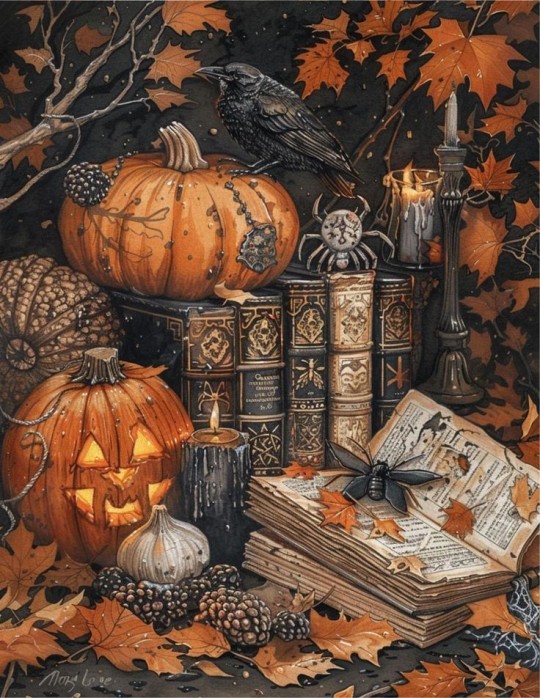
Samhain, pronounced "SAH-win", is the eighth Sabbat and final spoke on the Wheel of the Year. With ancient Celtic origins, Samhain was one of the four fire festivals, and falls at the halfway point between the Autumn Equinox ans Winter Solstice. Opposing Beltane on the Wheel, Samhain also similarly features a 'thinning of the Veil', a time when the barrier between our world and that of spirits and other magickal entities is weakened and easier to cross. While Beltane famously is a strong time to interact with the Fae due to the Veil thinning, Samhain is most known for interactions with spiritual entities, the dead, and ancestors.
Samhain is also known as the third and final Harvest Festival (the first being Lughnasadh, and the second Mabon). The frost is coming, and most of the produce has been collected from the fields and stored away. As people prepared for oncoming harsh weather and lack of food/resources, they had to cut back on everything that wasn't crucial to their survival. Thus, this festival was the time of the animal harvest. All creatures who could not be fed through the harsh Winter were harvested during this time, and celebrated for their sacrifice.
Other names for Samhain and similar celebrations include:
• Halloween
• All Hallow's Eve
• The Witch's New Year
• The Third/Final Harvest
• Calan Gaeaf, "The First Day Of Winter"
• Oiche Shamnhna
• All Soul's Day
• All Saint's Day
• Devil's Night
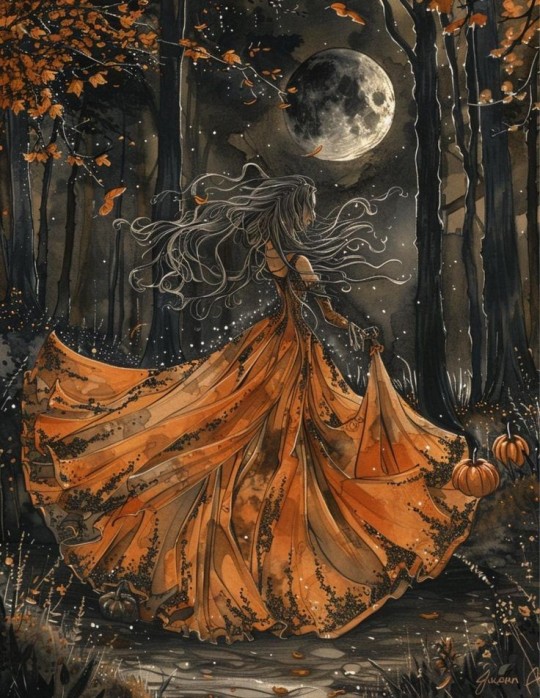
Common Samhain Traditions
• The Dumb Supper is when a meal is hosted and consumed by the living, but the dead and spirits are invited to participate and given seats and places at the table as a sign of respect. Often the windows are all open during a Dumb Supper to invite the spirits into a home. Sometimes specific spirits or ancestors are invited or the invitation is simply left open to any spirits that wish to attend. The living attendants traditionally eat in silence to honor the spirits and hear their messages.
• Carving Jack-O-Lanterns originally came from the myth of "Stringy Jack", which is an Irish folktale about a man who tricked the Devil and now has to wander the world with a lit piece of coal protected inside a carved turnip. This evolved into people carving their own turnips and potatoes and placing them in windows or doorways to scare away Stringy Jack and other tricky or potentially harmful spirits. Once Irish immigrants came to America, the tradition was continued with pumpkins.
• Trick-Or-Treating is also derived from old Samhain traditions. The Celts believed that by dressing up they were disguising themselves from negative spirits who wandered the Earth on Samhain. In the Middle-Ages, "guising" was when children or impoverished people would dress in costumes and go door-to-door begging for food in exchange for songs or prayers. This practice was known as "souling" and the participants called "soulers". In Ireland, the practice of "mumming" involved dressing up in costumes and going door-to-door to sing in exchange for tasty cakes and baked goods.
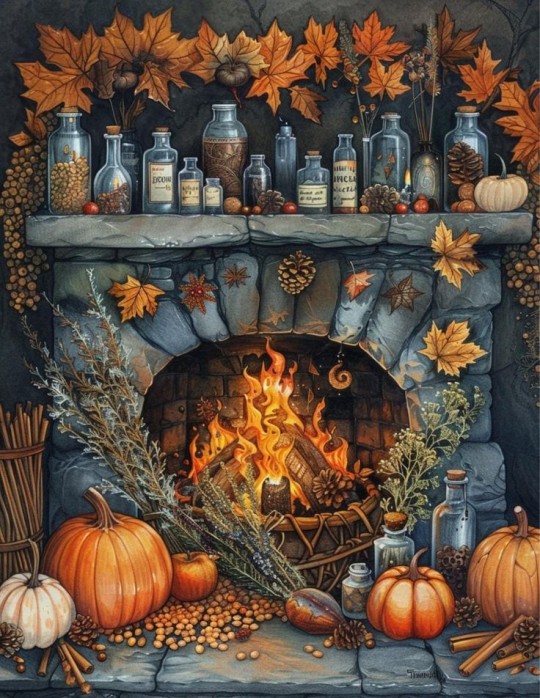
Samhain Correspondences
Colors:
• Black
• Green
• Orange
• Purple
• Red
• Silver
Crystals:
• Black Obsidian
• Bloodstone
• Amethyst
• Black Tourmaline
• Carnelian
• Jasper
• Jet
• Malachite
• Iolite
• Onyx
• Vivianite
• Ruby
• Smokey Quartz
• Garnet
Herbs/Plants:
• Cedar
• Allspice
• Cinnamon
• Hemlock
• Sage
• Rosemary
• Patchouli
• Hazel
• Dittany of Crete
• Bay
• Clove
• Belladonna
• Dragon's Blood
• Wormwood
• Mandrake
• Mugwort
• Snapdragon
• Gourds
• Nutmeg
• Frankincense
• Ginger
• Pine
• Hyssop
• Marigold
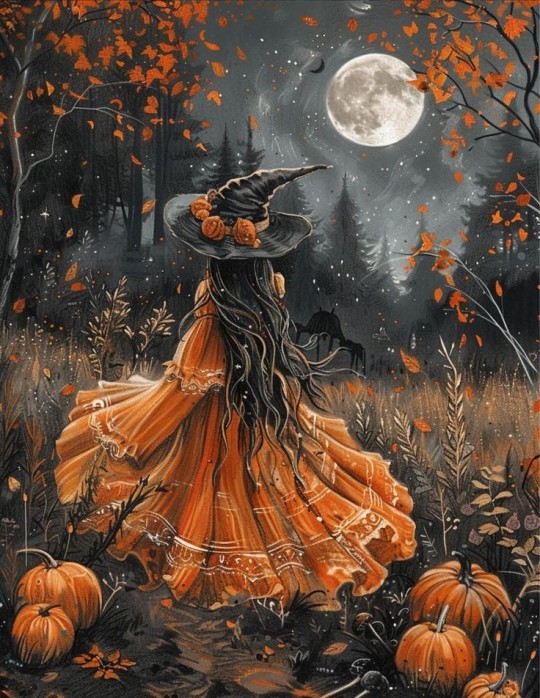
Animals:
• Bats
• Snakes
• Cats
• Spiders
• Scorpions
• Coyotes
• Jackals
• Dogs
• Wolves
• Foxes
• Crows
• Ravens
• Owls
• Rats
• Stags
Food/Drink:
• Pumpkins
• Cider
• Beef
• Chicken
• Pork
• Cranberries
• Turnips
• Potatoes
• Garlic
• Soups/stews
• Pears
• Corn
• Ale
• Apples
• Grain
• Pies
Deities:
• Hekate
• Lucifer
• Anubis
• Loki
• Lilith
• Morrigan
• Nyx
• Hades
• Persephone
• Osiris
• Apollo
• Cerridwen
• Hel
• Freya
• Demeter
• Bast
• Mercury
• Yama
• Dis
• Herne
Magickal Workings:
• Spirit Work
• Ancestral Work
• Banishing
• Cleansing
• Divination
• Baneful Magick
• Shadow Work
• Rebirth/Resurrection
• Transformation
• Creativity
• Defensive Magick
• Preparation
• Ambition
• Purification
• Protection
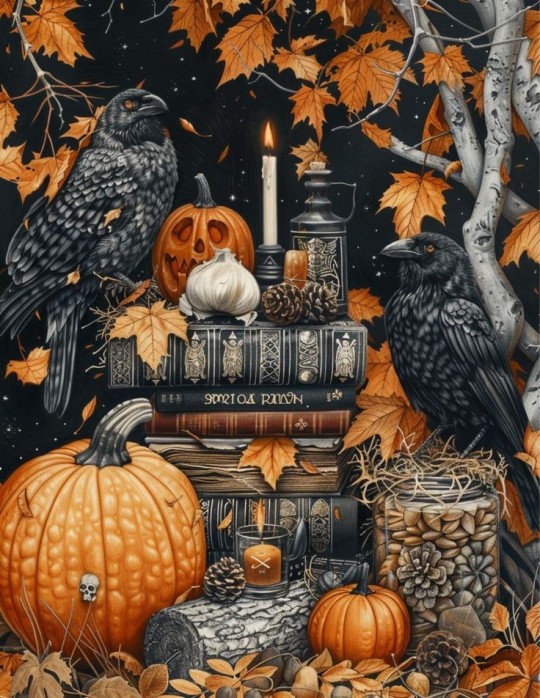
Bonus: Samhain Incense Recipe
• 2 parts Rosemary
• 1 part Frankincense
• 1 part Cinnamon
• 1 part Cloves
• 1 part Patchouli
• 1/2 part Sage
• 1/4 part Hyssop
• Pinch of Sea Salt
#magick#witch#satanic witch#lefthandpath#dark#witchcraft#spirit work#death witchcraft#chaos witch#samhain#wheel of the year#holiday#halloween#satanism#spirituality#spirits#ghosts#pagan witch#pagan community#witch community#witchblr
152 notes
·
View notes
Text
skully who r u [fae skully + a ramble on his possible background]
we have less than a day before we get the ending for this event and IM. NOT READY. im not ready to hear about how skully is a person from the past (and we're thinking 200 years or so), nor am i ready to go back to twst to hear that he's dead in our time and he's really the founder of modern halloween that nrc celebrates
... that's assuming he's human tho
and fortunately or unfortunately, there's hints that twst has been dropping that leads us to think otherwise
firstly: ears WHERE

in his live2D, you dont get to see his ears At All. not even a hint of an ear lobe. we know twst to be very detailed and deliberate with their designs so why did they choose to hide his ears
in his illustration, u can see a hint of an earlobe, but it's still very much covered

and as we know, when we look at malleus and lilia ears, we Know that they have pointy ears marking their pure fae ancestry. soooo skully..????? 🤨 fae skully real?????
i partly market the fae skully agenda bc PLS. WHAT IF... MEET . . .. .. IN OUR TIME. .. .. .. .... . PLS... . ... . .. . ..... 🥺 WE SEE HIM ALIVE BUT A LIL OLDER AND WAUGHHHHHHHHHHHHH pls i cant handle this yall
secondly: there is still that part in Episode 1-4 of skully saying to us "moshi... ne, moshi" instead of "moshimoshi", and a lot of ppl shared that the belief of supernatural beings not being able to address someone more than once is at play here. which would at least indicate to us that skully is at least not ur regular human being. and that is one thing about skully that we Can be sure about
on what skully may be, myonmyon put out a thread about how skully may be at least inspired by the Fear Gorta, a fae whose folklore was created from the irish famine. it's characterized by a skeletal appearance who wears tatters and rags. it can be benevolent or malevolent, but if u treat it kindly, it will bestow good blessings upon you. Fear Gorta also refers to Hungry Grass, which, if one steps on a cursed patch of grass (which i assume the fae created), they will always be hungry, no matter how much they eat, and will eventually die from starvation
ok why the irish famine? myonmyon and a few other theorists on twitter have speculated on skully possibly being inspired by (or maybe even being the twst equivalent of) the irish immigrants who moved to america, and from there, the tradition of halloween spread, resulting in the modern halloween that we know of today. it makes sense too given skully's character of spreading halloween to his fellow peers, who don't know what halloween is
oh but i don't mean to end this post here, no not yet. because there's a really interesting thread that i also found by Y_wwwsomething about how skully even got his viewpoint of halloween. i do like this thread because they kinda argue against skully's halloween being based on samhain, which a lot of people initially thought that that was his halloween. but samhain, even if it does have its scary side, is still a festival with feasting and noise, still very unlike skully's halloween. if anything, they suggested that the briar valley halloween is much closer to samhain.
my personal conclusion was that skully's halloween is based on all hallow's eve, and he's from a catholic family who celebrates halloween in a solemn manner. however, this thread is suggesting that skully idolizes the victorian british gentlemen and consequently the victorian halloween
let's look into the victorian halloween first. we note that the victorian halloween that was celebrated was often done by the upper class. several online sources will tell you that their halloween parties is, funnily enough, purposed for matchmaking. many halloween games involved girls looking into their futures, whether it's eating apples at midnight while looking at the mirror or looking at whatever object is in their apple or cake to see if they'll marry or die alone. halloween for them is less focused on fright and more on lover's passion.
however! their halloween parties are also dramatic in that they turn off the lights and only leave candles on, and when they greet guests, it's either by putting their own hand on the guest's shoulder or a glove filled with sawdust.
so we could have a situation here where skully, just like jack with christmas, may have observed one (1) party and misunderstood the victorian halloween, taking from it only the scary aspect and mixing it with any prior beliefs he may have had. it doesn't yet explain why he spent halloween alone, and tbh the catholic halloween celebration alone is already a near exact match of skully's definition of halloween, so im not very on board with this. could be that they are also loose enough to be festive? but im not sure
but im very interested about skully's possible reverence for the british gentlemen, which inspired his love for jack skellington! in the victorian era, they were defined by their birth (so if they were born to aristocratic parents), but men could also make themselves into gentlemen by growing their wealth and influence. some men have occupations that are respected enough to call them gentlemen (i.e. army members, members of the parliament). eventually the definition of a gentleman is one who received education from certain elite universities, but this is towards the end of the victorian era, so when trying to become a gentleman back then, it was much harder. so of course men tried to climb to become gentlemen. charles dickens actually wished to be recognized as a gentleman and so he wrote about it in great expectations.
and this is what interests me: during the irish famine, it's noted that british rule still stood on ireland, and if anything, the british elite even worsened the irish famine as they controlled trade between them. irish goods were exported out to britain and other countries while the people had nearly nothing, which either killed them off or pushed them to migrate. interestingly, british penal laws had it that irish catholics especially were suppressed—among their laws included that their land and home were confiscated by the british parliamentary officials in ireland
so what am i trying to get at here? it's that there's probably a nonzero chance that skully looked up to the gentlemen of britain... or if we're thinking in twst terms, the gentlemen of the queendom of roses. and this may be influenced by whatever was going on in his hometown, whether it's something akin to the irish famine and colonization or something else. a desire to be free? a desire to be more than what he is right now? it would very much be similar to sally and jack: sally, in how she wanted to be free from dr. finkelstein's controlling parenting, and jack in how he wanted to not just be the pumpkin king and tried to take over christmas. it also sort of mirrors leona's and jamil's desires for themselves too, how they want to be free to do the things they want to do and make an impact around them
what's even yummier is considering that if skully is a fae, or at least a nonhuman creature that has a distinctive ear shape, then he might take shame in his fae nature as he may perceive that the ideal gentleman is a human, which is similar to how sebek takes shame in his human nature. hence, his ears would be covered by his hair in order to hide this and mingle among the gentlemen.
anyway. idk how i went from "skully is a fae" to "skully is probably an irish catholic suppressed by the british colonial rule and wants to social climb hence he looks up to the ideal british gentleman, sees jack skellington in that image, and aims to be like that so that he can make something out of himself" but we ball ig
anyway, im cooked for tomorrow, im not ready yall :(
#twisted wonderland#twst#twst jp#skully j graves#twst theory#im cooking yall I SWEAR#I SPENT 4 HOURS RESEARCHING ABOUT THE HISTORY OF IRISH FAMINE AND BRITISH RULE AND VICTORIAN HALLOWEEN#NOW I AM AWARE OF CHARLES DICKENS' GREAT EXPECTATIONS AND WHY HE WROTE IT#IM SUPPOSED TO BE RESEARCHING OTHER THINGS NOT VICTORIAN GENTRY#anyway WHY DID I PUT EFFORT INTO THIS THE BACKSTORY'S PROBS GONNA BE LIKE “my parents were too controlling boohoo :((”#im normal guys i swear im normal about skully#(me when i lie)
91 notes
·
View notes
Text

Well, there are Halloween masks and then there are traditional Irish Halloween masks.....
Made from pig skin, this example comes from An Fál Mór, Co. Mayo and is now housed at National Museum of Ireland, Country Life, Turlough Park, Castlebar. Photo via National Museum of Ireland.
Poster based in the United Kingdom
https://static.wixstatic.com/
340 notes
·
View notes
Text

All About Samhain
Samhain, typically pronounced "sow-in", is an ancient Gaelic festival originating from a pagan spiritual tradition. It falls on November 1st in the northern hemisphere, but celebrations start at sunset on October 31st due to old Celtic timekeeping. It falls about halfway between the autumnal equinox and the winter solstice. The holiday also ushers in the end of the harvest season and the start of the dark months ahead, a.k.a the winter.
Samhain is marked as one of the most important fire festivals of the Celts, and is mentioned even in 9th century Irish literature. It was such an important time of year that neolithic passage tombs in Ireland aligned with the sunrise around this holiday, predating any historical text on it. Samhain was a celebration of large feasts and gatherings and was said to be a time where the portals to the otherworld were open and when spirits were close. However, the festival was not recorded in great detail until more early modern times.
At that time, it was mentioned how cattle were brought down from the summer pastures and slaughtered, special fires were lit for protection and cleansing, and offerings were made to the Fae and to the departed souls thought to visit their loved ones on this liminal holiday. Mumming and guising (wearing costumes and going door to door reciting verses in exchange for food) were recorded at this time. Divination also seemed to be a big part of celebrations at this time, usually involving nuts and apples.
In the 9th century, the western church declared November 1st All Saints Day and later November 2nd All Souls Day. It is believed that modern Halloween is influenced by all of these different holidays and their traditions since most of American Halloween was inherited from Irish and Scottish immigrants.
Samhain played a big role in Irish mythology, and many tales were passed down about this time of year and eventually written down by Christian monks in the Middle Ages. Most tales tell of large feasts, interactions with the Fae and the Otherworld, and of making offerings around this time of year within those tales.
In some Medieval texts, it is said that Samhain at Uliad lasted 3 days before and 3 days after, or a whole week. There were great gatherings where they held meetings, drank, feasted, and held contests. Bonfires were noted in many texts, often being lit by Druids and used to relight hearthfires and for sacrifices to the Gods. By the early modern era, they were most common in the Scottish Highlands, and by the 18th and 19th centuries, the fires, smoke, and ashes were said to have protective and cleansing powers. They were also used for divination and had a ritual involving laying stones around the fire, one for each person, and then left overnight to observe in the morning. It is said that if one of the stones had been mislaid, then that person would not survive the year. Other older customs suggest throwing the stones into the fire itself instead.
Divination on Samhain usually revolved around death or marriage. Apples and hazelnuts were common divination tools for these games and customs, apple bobbing being a common one even way back then. Food and drink were also used for divination, along with animals and dreams people had later that night.
Samhain was also noted to have many traditions involving the Fae and the deceased. People would take extra precautions to protect themselves against the Fae or even give offerings to appease them. It was also thought that the dead would revisit their homes, seeking hospitality in the cold, so places for them were set at the table. Thankful souls were thought to bring blessings, while a wronged person could bring revenge.
Mumming and guising were also recorded in the 16th century, where people would go door to door in costume and recite verses in exchange for food, sometimes for the feast itself. It was suggested that those who disguised themselves as Fae would be protected, but other sources talk about representing the old spirits of winter who demanded reward in exchange for good fortune. However, disguising as Fae led to many young men taking the step to play tricks and pranks on people as well, leading to Samhain being nicknamed "Mischief Night" as far back as the 1700s.
Modern pagans today seem to celebrate Samhain in many different ways, incorporating ancient traditions from a few of the overlapping festivals and ways unique to their own practice. Overall, it's a wonderful and fun time filled with feasting, fires, dressing up, and honoring the dead. Samhain has survived many generations despite the time passed and traditions varying throughout the years.
Samhain Associations:
Colors - orange, red, yellow, black, purple
Food - apples, pomegranates, nuts, squash, alcohol, ciders, breads, sweets
Animals - cattle and other farm animals, nocturnal animals
Items - carved vegetables, treats, protective totems, disguises
Crystals - obsidian, carnelian, bloodstone, citrine, onyx, smokey quartz
Other - bonfires, divination, costumes, mumming, feasts, death, souls, Fae
Ways To Celebrate:
carve a vegetable to represent a spirit (carve a pumpkin)
go mumming and guising (trick-or-treating)
have a bonfire
have a feast
enjoy some cider or mead
dress up in a costume
practice divination
play games like apple bobbing
honor your ancestors
leave offerings to the spirits
prepare your home for the upcoming winter
cleanse and protect your home
make a simmer pot
create an altar
gather with friends and family
give treats to others
#samhain#halloween#wheel of the year#witch#witchy#november 1st#wicca#wiccan#mythology#irish mythology#pagan#pagan holiday#irish#celtic#gaelic#divination#trick or treat#disguise#costume#treats#magick#magic#spiritual#spiritualism#spirituality#paganism#eclectic#sacred#witchblr#witchcore
34 notes
·
View notes
Text

Oíche Shamhna Shona duit! Happy Halloween!
Ireland joins the Hetalia Halloween party! He's dressed as a Fear Dearg, a traditional Irish fairy of mischief. Amongst other things, he's said to be responsible for switching babies with Changelings.
Fear Dearg translates to Red Man.
Here's a link to read more about the Fear Dearg! https://www.irishfolklorecentre.com/an-fear-dearg-the-red-man/
#hetalia#hetalia world stars#hetalia fanart#myart#drawing#anime#hetalia ireland#hws ireland#aph ireland#artists on tumblr#Hetalia halloween
30 notes
·
View notes